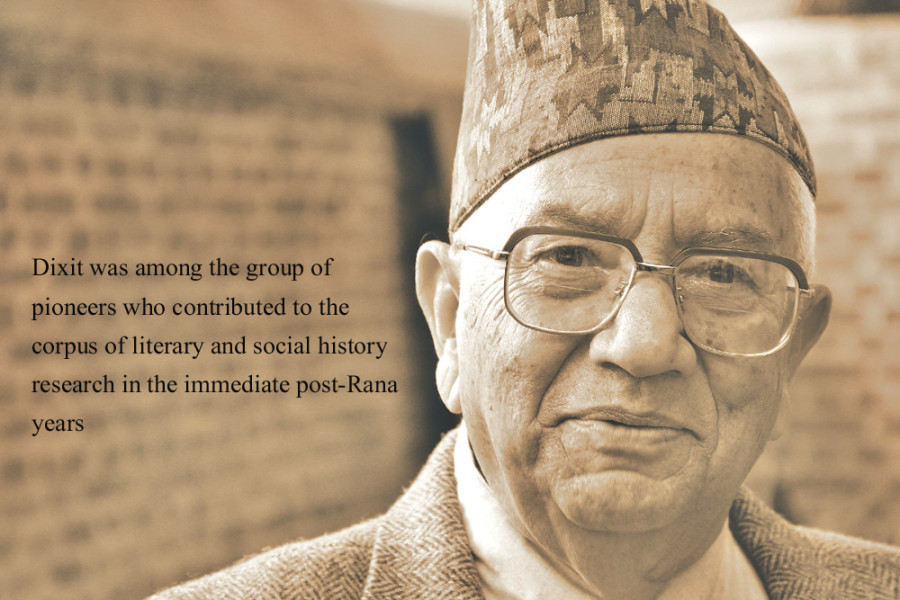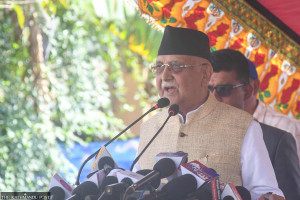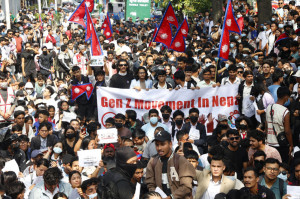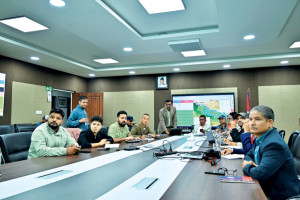Miscellaneous
Re-reading Kamal Dixit - the essayist
I started reading works on modern Nepali history seriously for the first time in mid-1989 when I decided to pursue graduate studies in history. In the following six years, as a doctoral student, I read hundreds of books related to Nepal.
Pratyoush Onta
I started reading works on modern Nepali history seriously for the first time in mid-1989 when I decided to pursue graduate studies in history. In the following six years, as a doctoral student, I read hundreds of books related to Nepal. Among them were several that Kamal Dixit (1929-2016) had authored and edited including Yesto Pani (2014 BS) and Kalo Akshar (2017 BS). These two books contain some of the best research essays Dixit had written in his writing career spanning more than six decades. They deal with the early Nepali encounters with the world of print and publications and they help us to understand the early history of the Nepali public sphere. Hence, their analytic turf overlapped with my doctoral research on the early formations of the discursive features of Nepali nationalism.
Subsequently when I continued to work on other aspects of Nepali nationalism and media history, I read many of Dixit’s later essays, some as they were published in various periodicals and others collected in the books he would inevitably publish each year for distribution at the annual Madan Puraskar awarding ceremony. In my view, the books of essays he has authored can be categorized into four main types. First are like Yesto Pani and Kalo Aksar which contain full length research essays with footnotes and citations. The decade of the 1950s saw Dixit penning these essays prolifically and publishing them in the leading magazines of the day. In so doing, he joined the group of pioneers who contributed to the corpus of literary and social history research in the immediate post-Rana years. As he has acknowledged publicly he was following in the footsteps of others who had blazed the trail before him. Although we continued to see this type of writing from him occasionally in his later years, it is regrettable that his subsequent collections did not match the success he had achieved as a researcher with these two books.

In the second type of Dixit’s books we can include those which contain a mix of research and exploratory essays around a particular subject. As such they stand testimony to Dixit’s incomplete transformation from a researcher in the 1950s/1960s to an essayist in the later decades. The footnotes are occasionally present but the obsessions of a researcher citing evidence to construct an argument are on the way out. While there are a few books that fall in this category (eg, Chandrajyoti published in 2041 BS), my own favorites constitute his Gorkhapatra trilogy: Kagatiko
Sirap (2026 BS; reprinted in 2053 BS), Char Kantha (2053 BS) and Sakhasantan (2061 BS). Together they constitute virtually the first stop for any scholar interested in the history of Gorkhapatra. They also offer interesting insights into other aspects (e.g. advertising) of the social history of second half of the Rana century.
Family history, memoirs and travelogues constitute the third type of Dixit’s books. Given that he was born two and half months before the death of Chandra Shamsher in a family that had served the Ranas for four generations, Dixit’s family history and memoirs make an interesting read to all those who have an interest in the Rana era. They discuss many aspects of Chandra Shamsher the ruler and his regime but also record the everyday life of the Dixit family whose patriarchs were the right hand men of Chandra when the latter ruled Nepal firmly for almost 30 years. These writings also give us some sense of the joys and tensions present in a large Brahman joint family in Kathmandu in the 1930s and the 1940s.
Moreover, many of Dixit’s memoir essays are related to his service for about 35 years to Chandra’s son Madan Shamsher and the latter’s wife Rani Jagadamba after the end of Rana rule in 1951. They recall, in part, how Dixit and his parents were successful in convincing Rani Jagadamba to donate parts of her wealth to various philanthropic causes including the establishment of the most prestigious award for writers in Nepal, the Madan Puraskar. They also help the readers to understand partially how their service to Madan Shamshar/Rani Jagadamba transformed this Dixit family from an erstwhile family of modest means to one with enormous capital, cultural and otherwise. Birseko Samjheko (2041 BS) is easily the best book among Dixit’s memoirs. He himself has regretted that his later memoir ‘Neti Neti’ (2054 BS) could not be a proper sequel to Birseko Samjheko. There are memoir essays in virtually all of his subsequent books but I wish he had penned more systematic book-length memoirs of his later years.
Miscellaneous collections of his essays on a variety of topics constitute the fourth type of Dixit’s books. These contain some interesting essays of good length and others that probably do not meet the definitional requirements of an essay. He has acknowledged as much in his preface to Cyber-Bhanu (2057 BS). His book Ukhan Milena! (2037 BS) is an early example of this type and his later books such as Bhat ra Pani (2070 BS), to which he asked me to write a foreword, also falls in this category. In the preface to ‘Neti Neti’, Dixit had written that he did not have the patience to write a book in a “planned” manner. Hence many of the books he published in the last 35 years fall in this fourth category. He had the means to produce them intellectually, one essay at a time, with occasional inspiration coming from items collected in the Madan Puraskar Pustakalya (MPP), an archive he had built over the course of his life-time. And as the owner of a printing press, he also had the means to publish them without having to resort to others for favor.
Given the unequal length and analytic value of the essays in the fourth type of Dixit’s books, we might wonder what the point of collecting them in such books is. As a historian of 20th century Nepal, I think Dixit’s many essays in these collections can be read as fragments of modern Nepali history. They can be read profitably in connection with related longer works by historians when they are available. For instance, Dixit’s essay focused on a camera, ‘Rolleiflex’ ko, included in his Bhat ra Pani, can be read in connection with my research essay on the history of photographic consumption in Kathmandu for the ninety years prior to 1951.
When such works are not available, they could provoke academic historians to do further work by pointing toward under-analysed subjects and under-utilised archives. For instance, many of the essays in Khurpako Bind (2066 BS) are based on unpublished documents held at the MPP. The documents and Dixit’s explorations of them let us have a peep into Rana family accounting regimes and records. These documents include lists of gifts distributed during Rana marriage ceremonies and help us to understand partially how patronage worked in a hierarchical society in early 20th century. They also list what wealthy Ranas imported from foreign countries as part of what the historically-minded anthropologist Mark Liechty once called the strategy of “selective exclusion.” They tell us what items could be found in some of the rooms of the Singha Darbar about 100 year ago. In short, even the miscellany Dixit published in his fourth type of essay-collections was pregnant with research possibilities.
Think about it. Wouldn’t it have been great to mix the kind of documents referred to in Khurpako Bind with Dixit’s intimate knowledge of Rana family everyday life and the comparative theoretical knowledge of consumption and class of someone like Mark Liechty to produce insightful academic articles on the second half of Rana Nepal? With Dixit’s passing on 29 December 2016, we can no longer realize this mix as I had once hoped. But with the continued presence of MPP managed by a digitally-savvy cohort of archivists and a new generation of historians of Nepal trained in some of the best universities in the world, those articles might still be written some day.
In October 2016, Dixit published a collection of essays entitled Gaekaharu, paying his homage to Nepali luminaries who had departed this earth. He has now joined that club himself, leaving behind an enormous corpus of essays for us to read and re-read.
Onta is a historian who writes essays




 19.12°C Kathmandu
19.12°C Kathmandu










